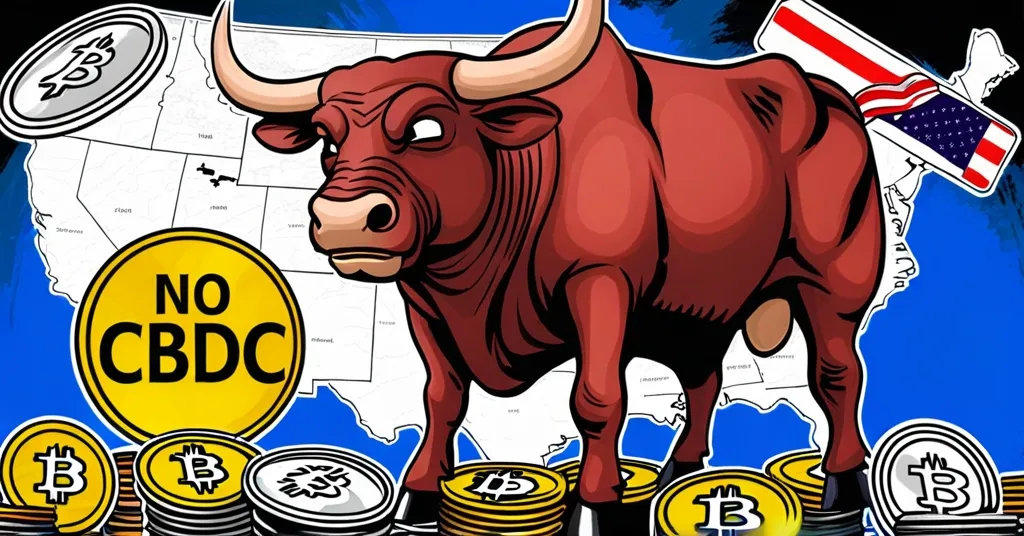Trump’s 2025 Executive Order Boosts Crypto, Bans CBDCs, Promotes Stablecoins

Trump’s Executive Order Aims to Make the U.S. a Crypto Powerhouse
On January 23, 2025, President Trump issued an executive order titled “Strengthening American Leadership in Digital Financial Technology,” signaling a major shift in U.S. cryptocurrency policy. This order aims to bolster digital assets while prohibiting central bank digital currencies (CBDCs) and promoting dollar-backed stablecoins. It also establishes a Working Group on Digital Asset Markets, chaired by David Sacks, to provide regulatory clarity within 60 days.
- Executive Order issued on January 23, 2025
- Supports digital assets, promotes dollar-backed stablecoins, prohibits CBDCs
- Establishes Working Group on Digital Asset Markets
- Rescinds previous orders related to CBDCs and international digital asset engagement
This executive order marks a clear departure from the regulatory ambiguity of the previous administration. By rescinding Executive Order 14067 from March 2022 and the Department of the Treasury’s “Framework for International Engagement on Digital Assets” from July 2022, Trump’s policy shift aims to foster a more crypto-friendly environment in the U.S.
The Working Group on Digital Asset Markets, led by David Sacks, is tasked with identifying necessary regulations within 30 days and submitting comprehensive recommendations within 60 days. This group, comprising crypto-friendly legislators and industry experts such as French Hill, Cynthia Lummis, Paul Atkins, Hester Peirce, Elon Musk, and Howard Lutnick, aims to streamline regulations and pave the way for U.S. dominance in the digital finance sector.
Industry leaders have responded with enthusiasm. William Quigley, co-founder of WAX.io and Tether, expressed his excitement, stating:
“It is exciting that the Trump Administration intends to make the United States the center of digital financial technology innovation by ensuring that regulatory frameworks are clear, especially in regard to stablecoins and the growth of digital financial technology in the United States remains unhindered by restrictive regulations or unnecessary government interference.”
Vivek Ramsar, CEO of etherealize.io, went further, proclaiming:
“We believe this [EO] was a monumental structural change to make the US the capital of crypto and AI.”
Rhett Shipp, CEO of Avant, emphasized the order’s stance against CBDCs:
“President Trump’s executive order rejecting a U.S. CBDC and supporting stablecoins is a clear signal of where the industry is heading. Stablecoins already serve as a more effective alternative—boosting dollar adoption globally while maintaining financial privacy.”
Lee A. Schneider, General Counsel at Ava Labs, views the order as a catalyst for significant activity:
“The Executive Order sets the stage for a lot of activity in the blockchain and crypto world, including from regulators. We are excited to work on the proposals as they take shape.”
The executive order’s focus on promoting dollar-backed stablecoins and rejecting CBDCs is a strategic move to enhance global dollar adoption and influence international digital asset regulations. This aligns with principles of decentralization and effective accelerationism (e/acc), a philosophy promoting rapid technological advancement. By prioritizing stablecoins, the U.S. aims to become a hub for financial innovation while maintaining financial privacy.
While bitcoin remains the flagship of the cryptocurrency revolution, the recognition of stablecoins and other digital assets acknowledges their unique roles in filling niches that even bitcoin might not serve effectively. However, as we celebrate this shift, it’s crucial to remain grounded in reality. The promise of clear regulations is exciting, but the execution will be key. The crypto space is rife with challenges, from regulatory hurdles to the ever-present threat of scams and unrealistic price predictions. As we move forward, maintaining a balance between optimism and realism will be essential.
The previous regulatory mess was a disaster for crypto innovation, but Trump’s order is a much-needed cleanup. It scrapes away the outdated Executive Order 14067 from March 2022, clearing the path for progress. Yet, there are potential pitfalls to consider. Increased regulatory oversight could stifle innovation in smaller crypto projects, and the focus on stablecoins might overshadow the broader benefits of decentralized finance.
Imagine an average crypto user, now navigating a landscape where stablecoins are the norm and CBDCs are banned. This could mean easier access to financial services without the looming threat of government-controlled digital currencies. But it’s also a landscape where vigilance against scams remains paramount. The crypto world is a wild west, and even with clearer regulations, the onus is on users to protect themselves from the snake oil salesmen promising unrealistic returns.
Here are the key takeaways and questions this new order raises:
- What is the purpose of the executive order issued by President Trump?
The purpose is to strengthen U.S. leadership in digital financial technology by supporting the growth of digital assets, promoting dollar-backed stablecoins, and providing regulatory clarity.
- How does the executive order address central bank digital currencies (CBDCs)?
It prohibits the creation and deployment of CBDCs in the U.S., reflecting a stance against government-controlled digital currencies.
- What role does the Working Group on Digital Asset Markets play?
The Working Group, chaired by David Sacks, is tasked with identifying regulations within 30 days and submitting recommendations within 60 days to establish a federal framework for digital assets.
- What are the reactions of industry leaders to the executive order?
Industry leaders like William Quigley, Vivek Ramsar, Rhett Shipp, and Lee A. Schneider express positive reactions, viewing the EO as a significant step toward making the U.S. a hub for digital financial technology.
- How does the executive order differ from previous policies under the Biden administration?
It rescinds previous orders related to CBDCs and international engagement on digital assets, shifts away from regulatory ambiguity, and aims to foster a more crypto-friendly environment.
- What are the potential impacts of the executive order on the global cryptocurrency landscape?
By promoting stablecoins and rejecting CBDCs, the U.S. could enhance global dollar adoption and influence international digital asset regulations, potentially making it a leading hub for financial innovation.
- What are the potential risks or downsides of the executive order?
Increased regulatory oversight could stifle innovation in smaller crypto projects, and the focus on stablecoins might overshadow the broader benefits of decentralized finance.
As the U.S. positions itself to lead the digital financial revolution, we must embrace both the potential and the pitfalls of the crypto world. This new era in finance values decentralization, privacy, and innovation, but it’s up to us to navigate it with eyes wide open, ready to challenge the status quo and push for a future where financial freedom is accessible to all.



